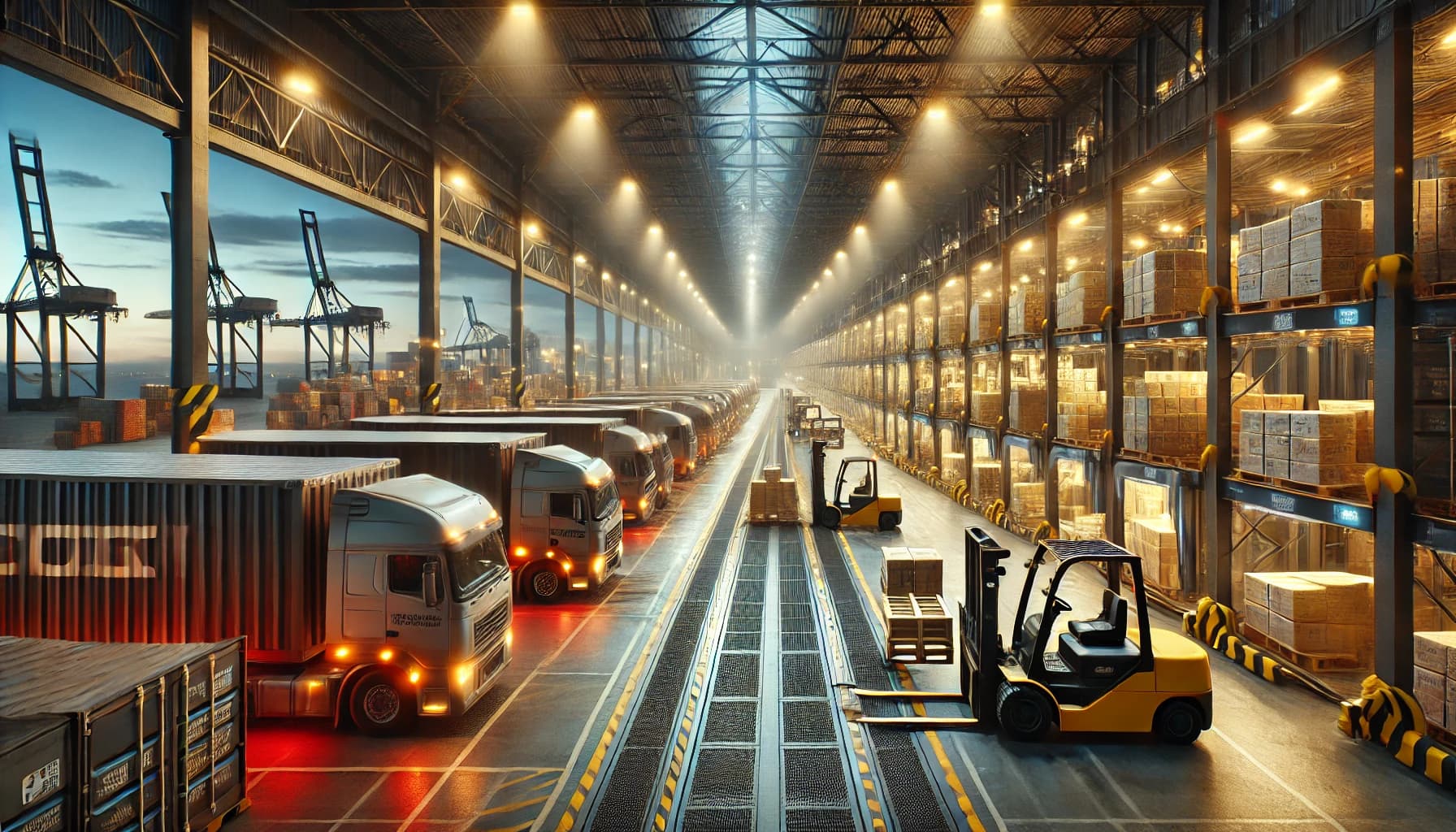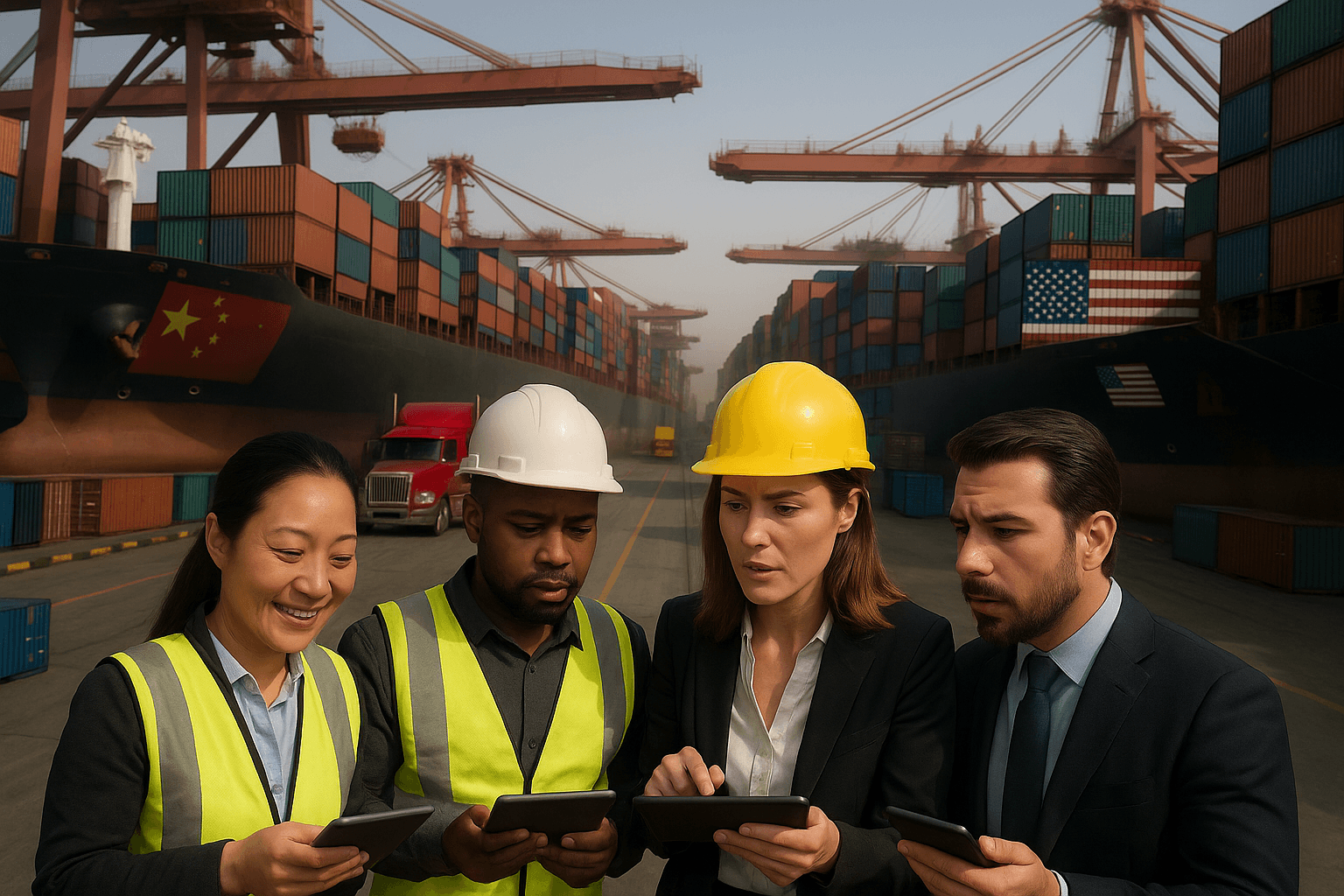
Transloading Services for Supply Chain Speed, Flexibility, and Cost Optimization
A strategic approach to multimodal logistics that enhances delivery, cost, and control.
Freitty
09 June 2025, 10 min read
What Are Transloading Services and How Do They Work?
Transloading services play a critical role in global logistics, enabling cargo to switch between different modes of transportation without significant delays or re-handling of inventory. In essence, transloading is the process of transferring freight from one form of transport to another—such as from a shipping container to a flatbed truck or rail car—at an intermediate location.
Unlike traditional shipping models where goods remain on one vehicle until final delivery, transloading allows businesses to strategically break down shipments and redistribute them for optimized delivery across regions or countries. The process typically occurs at logistics hubs or port-adjacent facilities equipped with cranes, forklifts, and loading docks designed for fast, safe cargo handling.
Businesses leverage transloading to reduce costs, increase delivery speed, and maintain tighter control over inventory movement in complex supply chains.
When and Why Businesses Need Transloading
Transloading services are not just a convenience—they are often essential. Companies operating in cross-border trade, intermodal logistics, or national distribution networks rely on transloading to stay agile and efficient. Here’s when transloading becomes a business-critical solution:
• Ocean-to-land transport transitions: Importers often transload goods from ocean containers into domestic trailers to reduce inland shipping costs.
• Rail-to-truck conversions: When freight arrives via rail but must reach destinations not accessible by train, transloading bridges the final-mile gap.
• Cross-border compliance: Goods entering new customs territories are frequently transloaded for inspection, documentation, or packaging modification.
• Retail fulfillment: Retailers use transloading to consolidate inventory from different suppliers before routing it to regional distribution centers.
• E-commerce scale-ups: High-volume e-commerce brands use transloading services to split, label, or relabel inventory en route to customers or warehouses.
Key Benefits of Using Transloading Services
Transloading creates real commercial advantages by enhancing operational speed and efficiency. Companies that integrate transloading into their logistics model often experience:
• Reduced transportation costs: By transloading cargo into domestic containers or trucks, businesses avoid hefty fees associated with empty container returns or long-haul imports.
• Improved delivery times: Transloading enables faster routing decisions and eliminates unnecessary stops or detours.
• Greater route flexibility: If weather or infrastructure disruptions affect one mode, transloading makes it easy to shift to another without delay.
• Inventory consolidation: Goods from different origins can be merged at a transload site to create full truckloads, maximizing capacity utilization.
• Lower damage risk: Compared to long hauls on a single vehicle, transloading allows better handling and reduces damage by aligning transport types with cargo needs.
Transloading vs. Cross-Docking: What’s the Difference?
While often confused, transloading and cross-docking serve different purposes:
• Transloading involves transferring freight between transport modes (e.g., from rail to truck). It often includes short-term storage, repackaging, and documentation.
• Cross-docking is typically same-mode (truck to truck) with minimal storage time, aiming for direct shipment from supplier to customer.
In commercial logistics, transloading is the preferred model for international or intermodal transitions, whereas cross-docking suits fast-paced domestic supply chains.
How Transloading Improves Inventory Flow and Visibility
Visibility is everything in modern logistics. Transloading services often integrate with inventory tracking systems to provide real-time updates on cargo location, condition, and ETA.
• RFID and barcode scanning at transload hubs capture data as goods move between transport modes.
• Warehouse Management Systems (WMS) are synced with Transportation Management Systems (TMS) to ensure alignment across carriers and facilities.
• APIs and cloud dashboards allow logistics teams to monitor delays, adjust routes, and reroute inventory in real time.
As a result, businesses gain more than movement—they gain insight and control over their entire distribution ecosystem.
Real-World Logistics Scenarios Involving Transloading
Let’s look at how transloading plays out in everyday logistics:
• Port of Los Angeles: Large retailers import goods from Asia, which are transloaded from 40-foot ocean containers into 53-foot domestic trailers for inland transport to warehouses in Nevada or Illinois.
• Midwest agricultural exports: Grain harvested in Iowa is loaded into rail cars, then transloaded onto ships at Gulf Coast terminals for export to Europe.
• Canadian e-commerce: A Montreal-based fulfillment center transloads goods from U.S. suppliers arriving by truck into local courier vans for urban delivery in Quebec.
In each scenario, transloading reduces idle time, enables faster turnaround, and supports scalable growth.
How Transloading Supports Retail, E-commerce, and Manufacturing
Transloading is no longer limited to import-export operations. It’s become a pillar of modern supply chains across industries:
• Retail: Regional distribution centers depend on transloading to break bulk and repackage inventory for stores.
• E-commerce: Fast fashion and electronics brands use transloading to relabel, split, and redirect inventory based on real-time demand.
• Manufacturing: Assembly plants receive parts via rail, which are transloaded into delivery trucks scheduled to arrive just in time for production cycles.
By improving flow, transloading helps reduce buffer stock, optimize lead times, and minimize warehousing overhead.
Choosing the Right Transloading Partner
Not all logistics providers offer the same level of service. To benefit fully, businesses should select transloading partners who provide:
• Strategic locations: Facilities near ports, rail yards, or interstate corridors are essential for speed.
• Tech integration: Choose partners whose systems integrate with your WMS or TMS.
• 24/7 operations: Look for round-the-clock capabilities to minimize delays and increase throughput.
• Safety and compliance: Providers must follow OSHA guidelines and offer secure, audited processes for handling sensitive or regulated goods.
• Experience and scalability: Proven expertise in your sector (retail, industrial, food-grade) is crucial for long-term success.
Sustainability in Transloading Operations
As sustainability becomes a strategic focus, transloading helps reduce the environmental impact of shipping operations:
• Fewer empty miles: By consolidating cargo and optimizing load plans, transloading reduces unnecessary trips.
• Improved fuel efficiency: Aligning cargo size and weight with the most efficient transport type minimizes emissions.
• Less waste: Optimized packing and route planning result in lower material usage and reduced spoilage.
• Modal shifting to greener transport: Goods can be transloaded onto rail or other low-emission options, supporting ESG goals.
Smart transloading isn’t just a logistics advantage—it’s a step toward sustainable growth.
Conclusion: Making Transloading a Strategic Supply Chain Tool
Transloading services transform complex transportation networks into agile, cost-efficient systems. By enabling mode flexibility, faster delivery, and stronger inventory control, transloading supports scalable logistics for businesses of all sizes.
Whether you're a retailer aiming to reduce transit time, a manufacturer balancing inbound flows, or a 3PL seeking competitive differentiation, transloading can unlock new efficiencies. It’s not just a service—it’s a strategic enabler of modern logistics.
You may also like

Bridging Giants: Navigating the US-China Supply Chain in a Shifting Global Landscape
Unlocking Opportunities Amidst Geopolitical Change
0 min read

Unlocking Value Together: How the Sharing Economy Is Reshaping Logistics and Beyond
The New Age of Shared Value
0 min read

Logistics Without Limits: How Franchising Is Fueling the Next Wave of Growth in the Industry
A New Era of Scalable, High-Performance Logistics
4 min read
Streamline Your Logistics Today
Partner with Freitty for smarter, faster, and more efficient cross-docking services.
